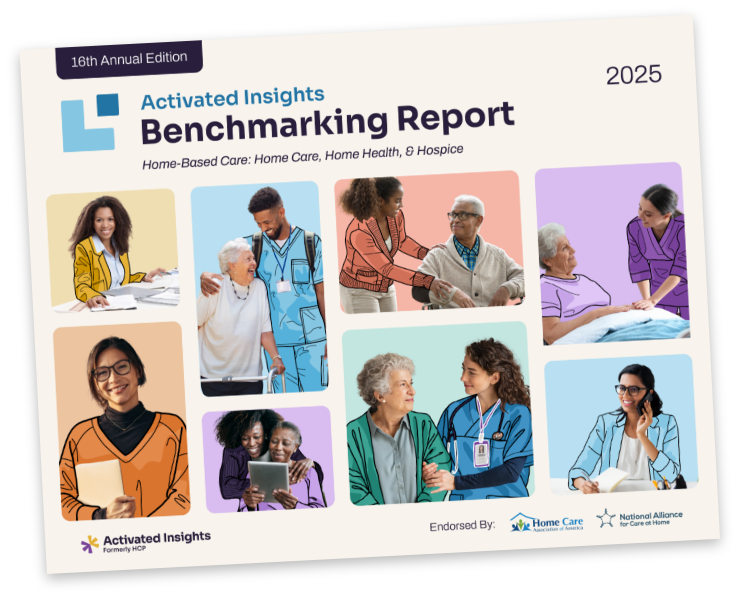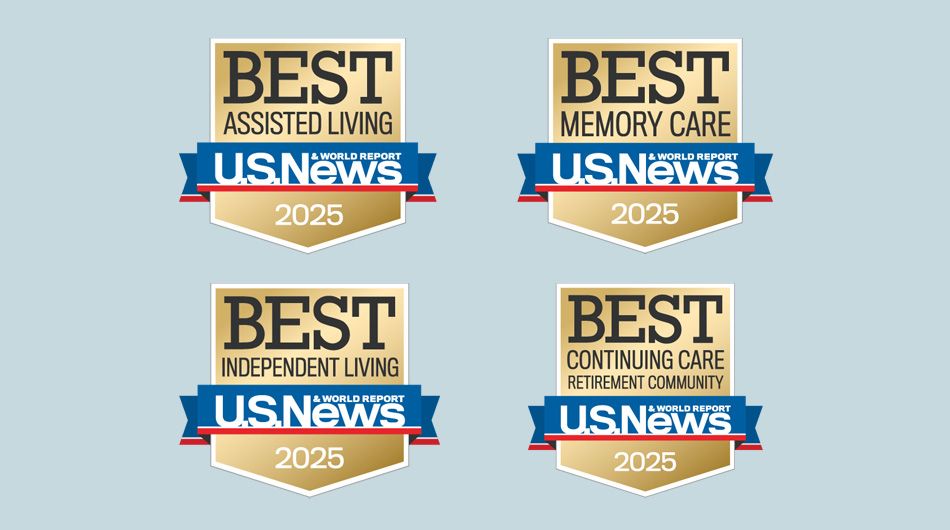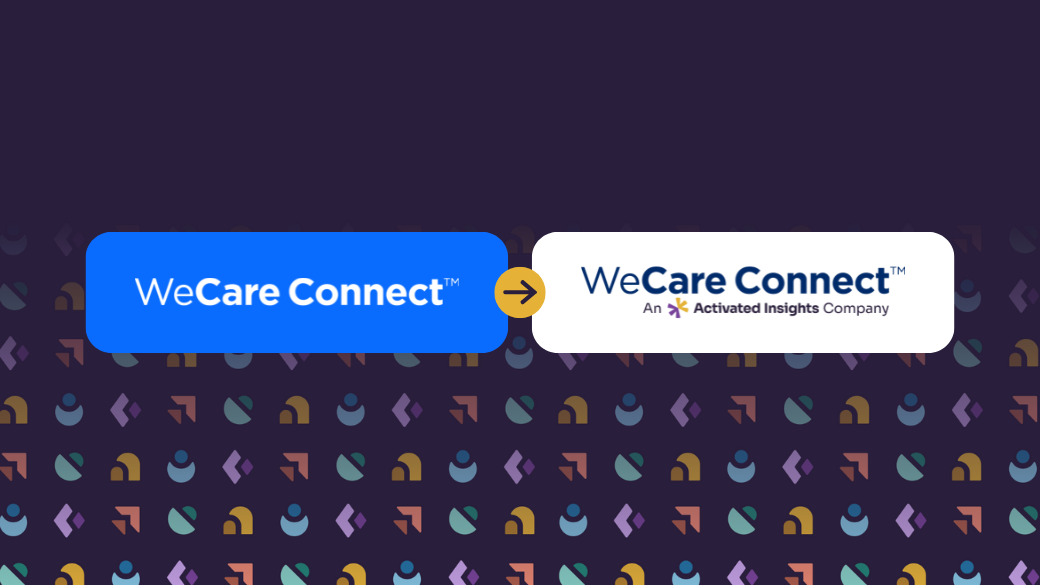
In our article for the 2016 Home Care Benchmarking Report, we proclaimed that the Caregiver Recruiting and Retention Crisis is official. All of the data we have gathered shows us that if owners and CEOs of home care companies want their businesses to survive and prosper in the long term, they need to develop a totally new mindset about caregivers.
The situation has only gotten more challenging this past year. The crisis is real and will be with us for a long, long time.
A report published by the Family Caregiver Alliance suggests that 8,357,100 people annually receive support from the five main long-term care services:
- Home health agencies (4,742,500)
- Nursing homes (1,383,700)
- Residential care communities (713,300)
- Adult day service centers (273,200)
The Number One Way to Compete
Another question in the Home Care Benchmarking study is: “How do you separate your company from your competitors.” For four years in a row, “Caregiver Quality” was the number one source of competitive advantage for home care CEOs.
The biggest threat to home care agencies is the caregiver shortage. Caregiver turnover continues to rise, and the number one way to compete is caregiver quality. We have a real crisis, and as leaders, we need to conquer it.
The Three-Tiered Solution
There are three tiers, or stories, in the solution to the caregiver recruiting and retention crisis – the upper story, the middle story, and the lower story.
The Upper Tier is where we look at the demographics of the health care workforce. This is where we recognize that there are simply not enough workers in healthcare to meet the growing demands of an aging population. This solution at the upper story requires an industry-wide effort to make careers in health care more attractive to young people and to provide the education to prepare them for health care careers.
We have done significant research on what government and health care leaders are doing to solve this crisis at the demographic level, and that’s a topic for another day. In short, though, we encourage you to get involved at the local and state level to support efforts to attract more qualified workers to health care as a career.
The Middle Tier is where organizations focus on their company culture and leadership. The effort at this level is all about creating a Culture of Attraction and Accomplishment. It’s about creating an organization where the limited number of workers who are committed to the home care and hospice are attracted. We’ll devote a whole section to this story.
The Lower Tier is where organizations develop tactical solutions to attract and retain top talent at the front lines. This solution involves helping you define and implement the seven steps of the Caregiver Quality Solution System.
Creating a Culture of Attraction and Accomplishment
We define culture as “the way we do things around here.” The culture of your company is driven by four fundamental factors:
- The leadership style of the CEO.
- The core values that guide decisions and actions.
- The behavior we expect.
- The behavior we permit.
A “Culture of Attraction and Accomplishment” we define as “a culture where employees feel like this is a Great Place To Work, where they can do meaningful work that makes a difference, and where they feel valued and appreciated.” We’ve shortened this to COAA. What does it take to be a COAA company?
There are three distinct parts to this culture:
- A Great Place To Work.
- They can do meaningful work that makes a difference.
- They feel valued and appreciated.
Our study of company culture and our three decades of experience leading executive strategy sessions and board retreats suggests there are five steps to creating a strong culture.
- The senior leadership team makes a commitment to develop and implement a vision and strategy to grow the business.
- As a part of setting vision and strategy, the team defines the core values that will guide their thoughts and actions. Sometimes these values are explicitly stated by the leadership team. Other times, these values are implicitly defined by the CEO and her or his leadership style.
- The company seeks the very best talent to execute that strategy with excellence.
- The implementation works. The business grows and people behave in ways that are guided by the vision, values, and strategy.
- The firm succeeds by most measures and that success continues over time.
A culture emerges that reflects the vision, values, and strategy and the experiences people had in implementing them
The Seven Step Caregiver Quality Solution
Once you have defined your “Culture of Attraction and Accomplishment,” you need to put in place a system to solve the crisis. Your system needs a set of steps that you can take over and over and over again to find and keep the caregivers you need. Repetition and consistency are key.
The Seven Steps:
- Define Your Best Caregivers – You will find great caregivers by studying your current best caregivers and developing strategies to find more just like them.
- Attract the Best – Use a three-pronged recruiting strategy that includes digital, employee referrals, and face-to-face.
- Select the Best – Selection is the key to having great caregivers and you need a consistent process for screening and interviewing.
- Hire and Onboard the Best – Your onboarding process sets the stage for your new employees’ entire career with you. Make the best of it.
- Educate and Train the Best – Data show that caregivers who receive ongoing training are better workers, happier workers, and will stay with you longer.
- Recognize and Reward the Best – The number one factor for caregiver retention is appreciation and recognition. Caregivers want to feel like they are valued and appreciated.
- Retain the Best – You need to invest as much or more in retention as you do in recruiting. Agencies that are recruiting for growth are more effective than agencies that are recruiting to replace turnover.
Measure Your Results
To conquer the caregiver recruiting and retention crisis, you need to be constantly trying new things and evaluating the results. You are shooting at a moving target, and what works today in your local market may not work tomorrow. What works in San Diego may not work in Miami or Toledo or Des Moines.
That means you need to track everything you do with your recruiting and retention strategy and use the data to evaluate what’s working and what’s not.
We’re big on creating simple scorecards to measure and monitor the numbers that are critical to your success. In working with hundreds of CEOs and executive teams in home health, hospice, and private pay home care, we see two major issues with tracking:
- Leaders who track too little.
- Leaders who track too much.
The first group consists of leaders who have not put in place processes to capture raw data. They have no way to gather information or knowledge about their businesses because they don’t have any data to analyze.
Our friend Dan Burrus is an award-winning professional speaker, best-selling author, and one of the world’s premier technology forecasters. Dan taught us about the four levels of your data stream:
To measure the performance of your caregiver recruiting and retention process, there are some basic metrics you can track:
- Billable Hours per Week
- Total Active Caregivers
- Unfilled Shifts This Week
- Total Job Applicants
- Pre-employment Assessments Completed
- Interviews Completed
- Satisfactory Background Checks
- Onboarding Completed
- Started First Shift
By capturing raw data about your recruiting and retention activities, you can track how well various techniques are working. We suggest setting up a Strategic Staffing Scorecard to measure weekly each of these numbers, and use the information to get your office team engaged in finding and keeping better caregivers.
 Author
Author
Stephen Tweed | Stephen Tweed has spent the past three decades working with owners, CEOs, and administrators of top tier companies in private pay in-home care. He’s the CEO of Leading Home Care … a Tweed Jeffries company, founder of the Home Care CEO Forum, and creator of Caregiver Quality Assurance. Stephen and his team have partnered with Activated Insights since the beginning of the annual home care benchmarking study to bring you the latest data and information about our industry.
Stephen’s new book, Conquering the Crisis: Strategies for Caregiver Recruiting and Retention will be published in May 2017 by Red Letter Press. To order a pre-publication copy of this trend setting book, go to www.conquerthecrisis.com.
Related Posts













